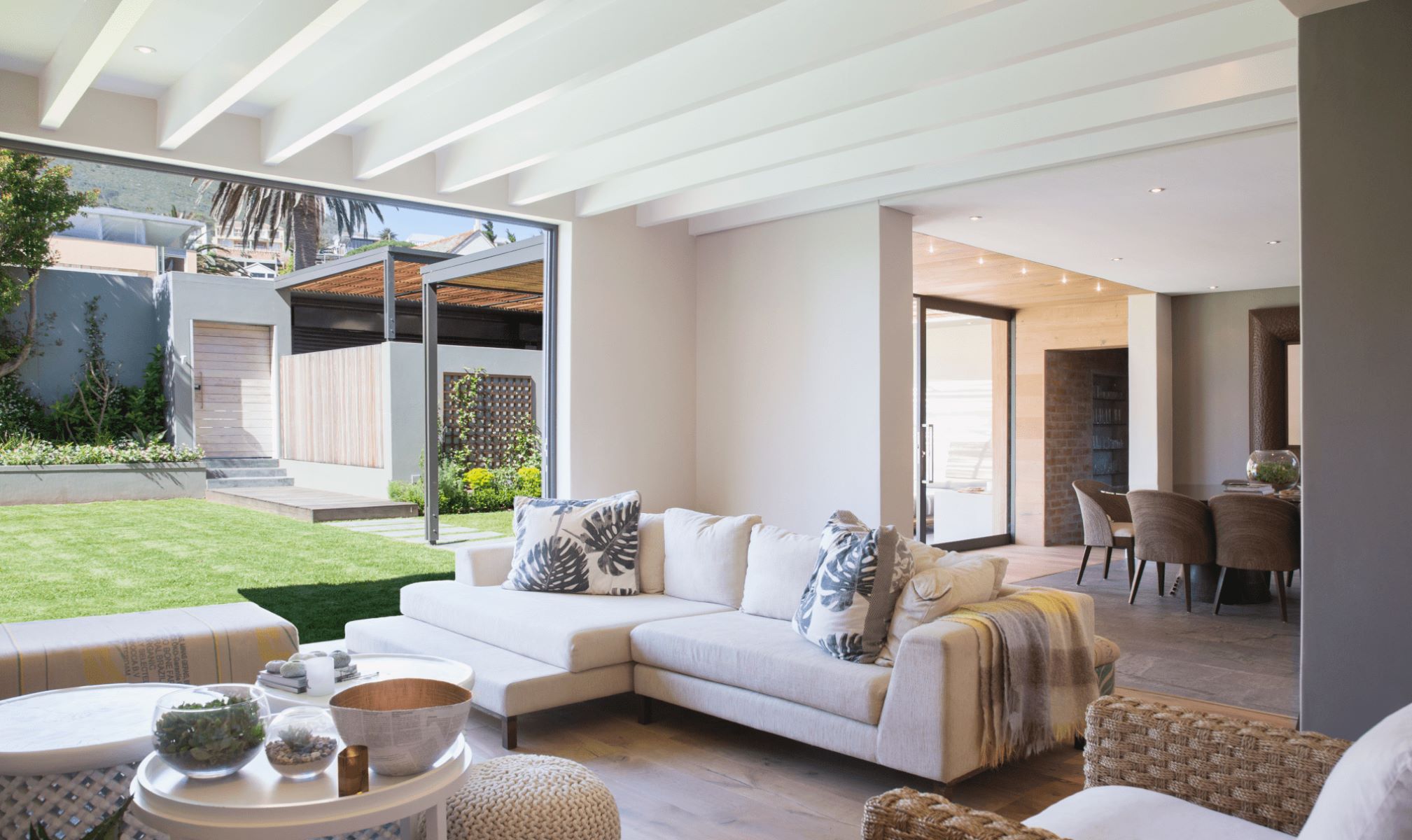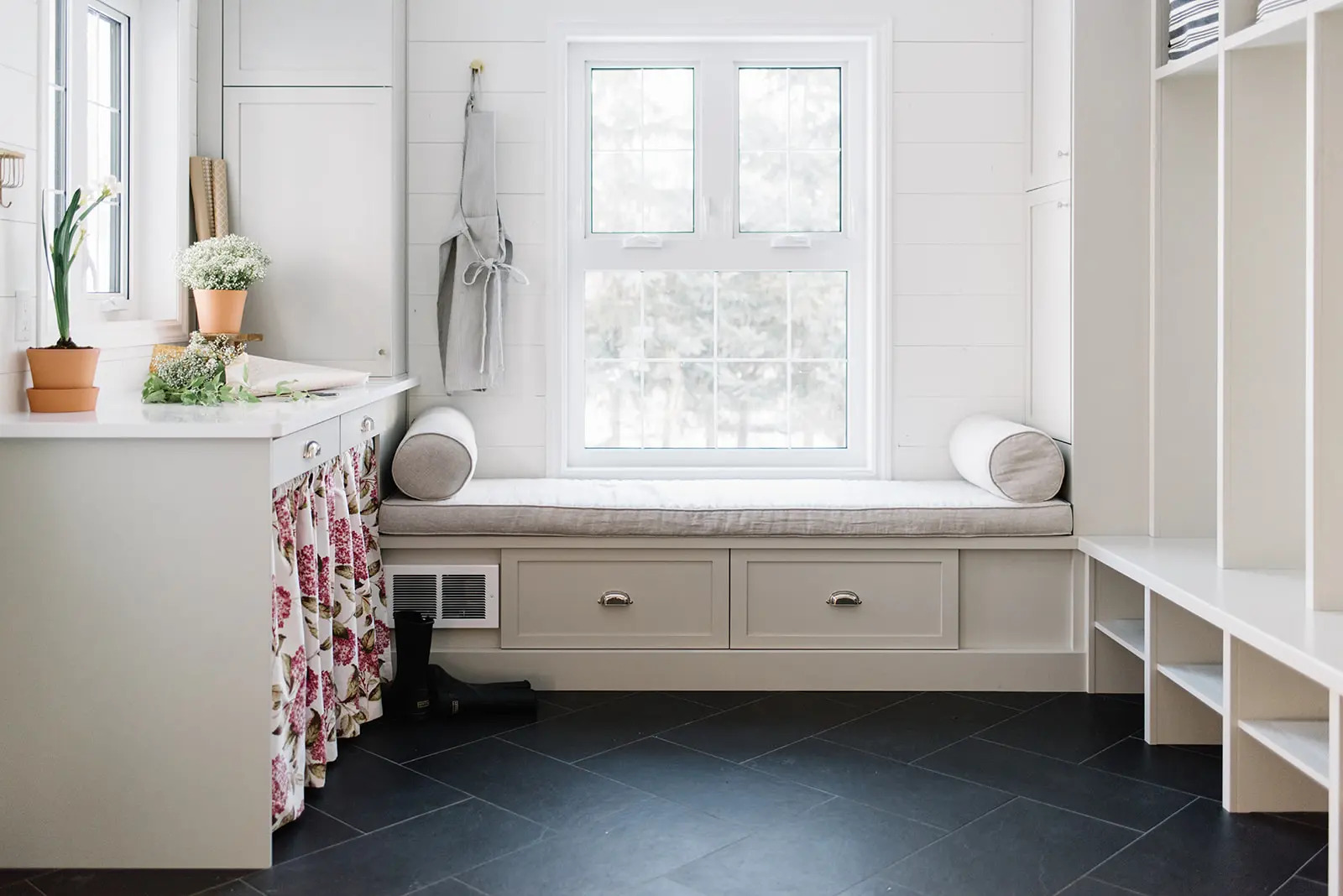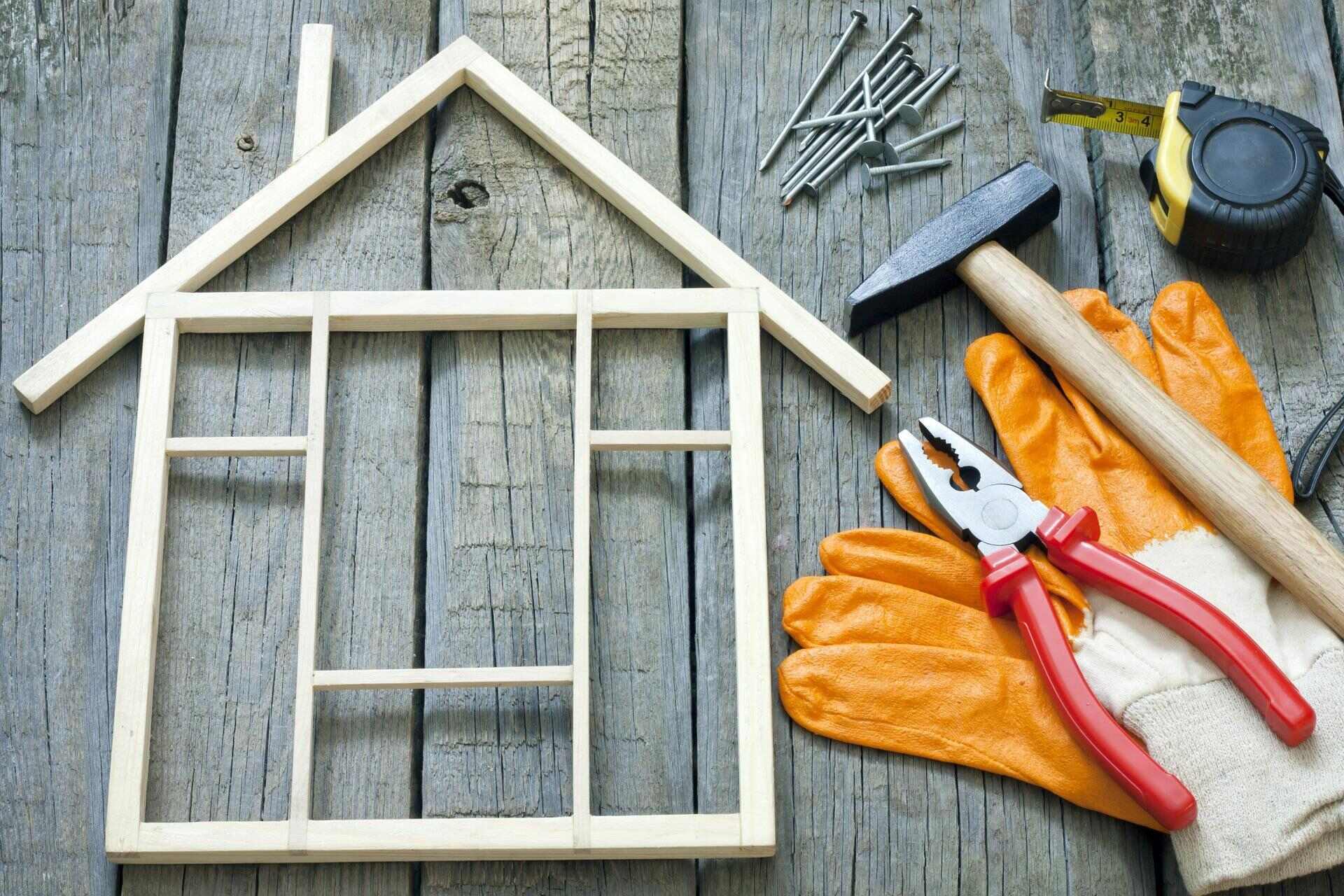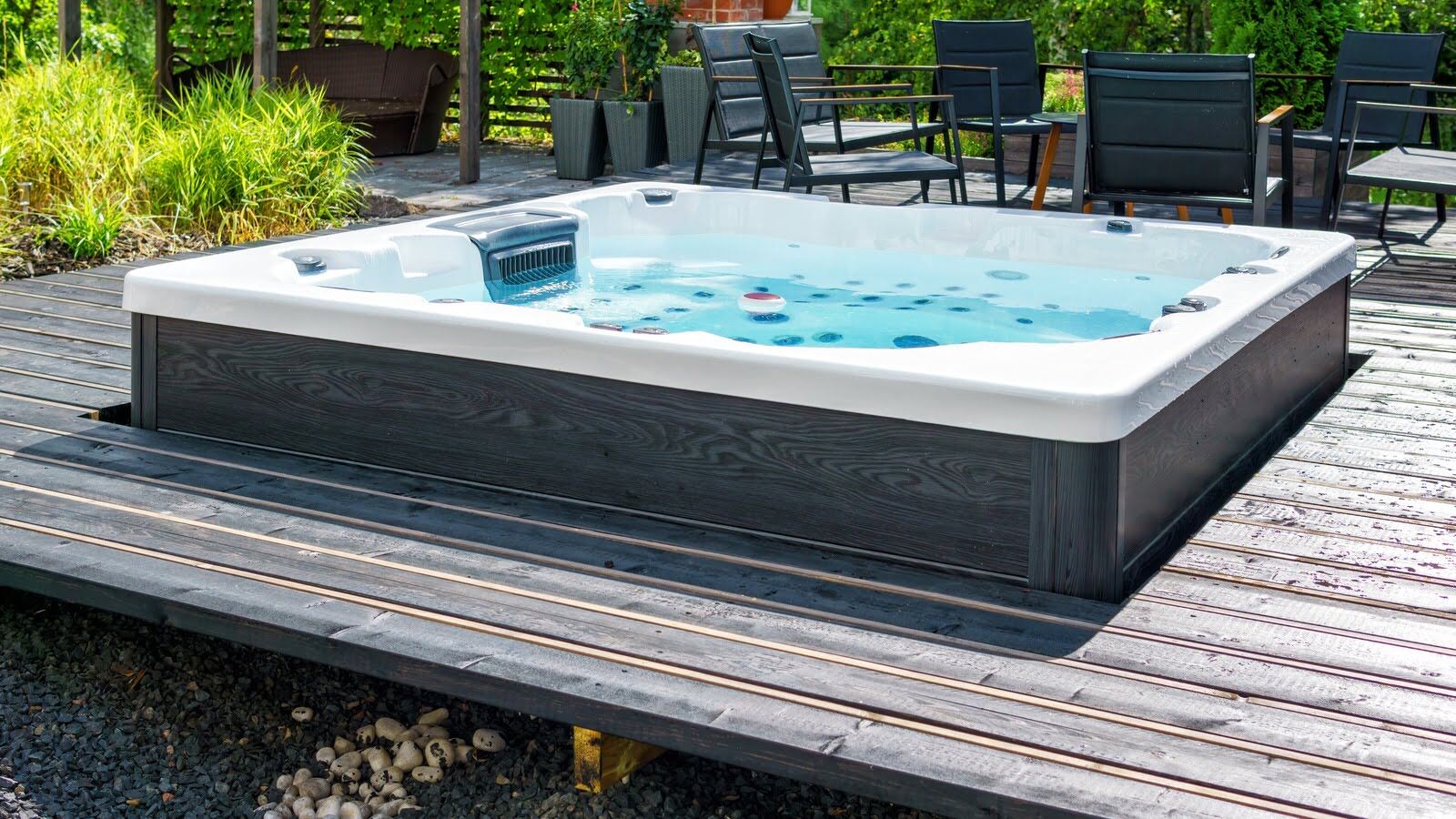Home>diy>Architecture & Design>What Do You Need To Do To Design A House


Architecture & Design
What Do You Need To Do To Design A House
Modified: March 6, 2024
Discover the essential steps and key elements involved in #architecture-design to create your dream house. From conceptualization to execution, learn how to design a house that reflects your style and meets your needs.
(Many of the links in this article redirect to a specific reviewed product. Your purchase of these products through affiliate links helps to generate commission for Storables.com, at no extra cost. Learn more)
Introduction
Designing a house is an exciting and fulfilling endeavor. Whether you are building your dream home from scratch or remodeling an existing space, the design process plays a crucial role in creating a functional and visually appealing dwelling. From determining your goals and needs to selecting materials and finishes, each step of the design process requires careful consideration and attention to detail.
In this article, we will explore the key steps involved in designing a house and provide insights into how you can create a space that reflects your style and meets your unique requirements. So, let’s dive in and discover what it takes to design a house that you’ll love coming home to.
Key Takeaways:
- Designing a house involves defining goals, gathering inspiration, creating a design concept, developing a floor plan, and selecting materials. Collaboration with professionals is crucial for bringing the vision to life.
- Consideration of future expansion, environmental factors, and functional spaces is essential. Lighting design and collaboration with architects and contractors play a key role in creating a personalized and well-constructed home.
Read more: What Do You Need To Start Building A House
Step 1: Determine Your Goals and Needs
Before embarking on the design journey, it’s essential to clearly define your goals and needs for the space. Consider factors such as the size of the house, the number of rooms you require, and any particular features or amenities you desire.
Take into account your lifestyle, family size, and future plans. Are you planning to have children? Will you need a home office or a guest room? By understanding your current and future requirements, you can create a design that will accommodate your needs for years to come.
Step 2: Research and Gather Inspiration
Once you’ve defined your goals and needs, it’s time to gather inspiration. Look for architectural styles, interior designs, and landscaping ideas that resonate with your tastes and preferences.
You can explore magazines, websites, social media platforms, and even visit open houses or architectural tours to get a sense of different design options. Create a mood board or save images that inspire you. This process will help you identify the aesthetic direction you want to pursue for your house.
Step 3: Create a Design Concept
With your goals and inspiration in mind, it’s time to create a design concept. This involves developing a cohesive vision for your house, considering both the exterior and interior spaces.
Think about the architectural style, layout, and overall feel you want to achieve. Do you prefer a contemporary design with clean lines or a traditional style with ornate details? Will your house have an open layout or individual rooms? This concept will serve as the foundation for the rest of the design process.
Step 4: Develop a Floor Plan
The next step is to create a floor plan that translates your design concept into a practical layout. Collaborate with an architect or utilize 3D modeling tools to visualize the spatial arrangement of rooms, circulation areas, and essential elements.
Consider how different spaces will flow and interact with each other. Ensure that there is ample room for furniture placement, natural light, and efficient traffic flow. This step is crucial in maximizing the functionality and usability of your house.
Read more: What is a Pergola and Why Do You Need One?
Step 5: Select Materials and Finishes
The materials and finishes you choose greatly impact the overall look and feel of your house. Consider elements such as flooring, wall treatments, cabinetry, countertops, and lighting fixtures.
Research different options, compare their durability, maintenance requirements, and cost. Opt for materials that align with your design concept, provide the desired aesthetic, and meet your lifestyle needs. Pay attention to color palettes, textures, and patterns to create a cohesive and visually pleasing environment.
Key Takeaways:
- Designing a house involves defining goals, gathering inspiration, creating a design concept, developing a floor plan, and selecting materials. Collaboration with professionals is crucial for bringing the vision to life.
- Consideration of future expansion, environmental factors, and functional spaces is essential. Lighting design and collaboration with architects and contractors play a key role in creating a personalized and well-constructed home.
Read more: What Do You Need To Start Building A House
Step 1: Determine Your Goals and Needs
Before embarking on the design journey, it’s essential to clearly define your goals and needs for the space. This step sets the foundation for all the subsequent design decisions. Consider factors such as the size of the house, the number of rooms you require, and any particular features or amenities you desire.
Start by evaluating your lifestyle and how you envision your dream home. Are you an avid entertainer who needs ample space for gatherings? Do you enjoy spending time outdoors and need a large backyard or patio area? Are you looking for a quiet retreat where you can relax and unwind? Taking into account your unique preferences and requirements will help guide the design process.
Think about your family dynamics and future plans. If you have children or are planning to start a family, you may need additional bedrooms, play areas, or a dedicated home office. If you have elderly family members or individuals with mobility challenges, incorporating accessibility features like ramps or wider doorways may be necessary. Anticipating future needs will ensure that your house remains functional and adaptable for years to come.
Consider the location and climate of your property. If you live in a colder climate, you may prioritize features such as insulation, double-glazed windows, or a fireplace to keep the space cozy during winter months. On the other hand, if you reside in a hot and humid area, incorporating cross ventilation, ceiling fans, or even a swimming pool can enhance comfort and enjoyment.
Budget is another critical factor to consider. Determine how much you are willing to invest in your house’s design and construction. This will help you prioritize your needs and make informed decisions when selecting materials, finishes, and additional features.
Engaging with professionals such as architects and interior designers can be beneficial during this step. They can provide valuable insights, suggest innovative ideas, and help you refine your goals and needs based on their expertise and experience.
Remember, the goal is to create a space that reflects your personality, meets your functional requirements, and enhances your quality of life. Take the time to thoroughly evaluate your goals and needs, as this will shape the rest of the design process. By doing so, you’ll be on your way to designing a house that truly feels like home.
Step 2: Research and Gather Inspiration
Once you have determined your goals and needs for your house, it’s time to embark on the exciting process of gathering inspiration. This step will help you refine your design aesthetic, explore different possibilities, and ignite your creativity.
Start by immersing yourself in various sources of inspiration. Magazines, websites, social media platforms, and design blogs are all excellent resources for discovering architectural styles, interior designs, and landscaping ideas. Flip through pages, browse online galleries, and save images that resonate with your tastes and preferences.
Visiting open houses, attending home shows, or taking architectural tours can also provide firsthand inspiration. Seeing different designs and experiencing spaces in person can give you a better understanding of what you like and what resonates with you.
Create a mood board or a digital folder where you can compile your inspiration. This visual collection will help you identify patterns, themes, and elements that you are consistently drawn to. It will also serve as a point of reference throughout the design process.
As you gather inspiration, pay attention to architectural styles, such as modern, traditional, farmhouse, or Mediterranean. Explore different interior design themes, such as minimalism, Scandinavian, industrial, or eclectic. Consider the use of materials, finishes, color palettes, and textures that catch your eye.
Don’t be afraid to think outside the box and explore unconventional ideas. Take inspiration from different cultures, art movements, or even nature itself. Incorporating unique and personal elements into your design can create a truly one-of-a-kind space.
While it’s helpful to gather inspiration, be mindful of staying true to your own preferences and needs. It’s easy to get overwhelmed with the sheer amount of ideas out there. Filter your inspiration to reflect your overall vision and the functional requirements of your house.
Collaborating with a professional designer can be immensely helpful during this step. They can guide you through the process, provide expert advice, and help you streamline your inspiration into a cohesive design concept.
Ultimately, the goal of this step is to explore different design possibilities, develop a sense of your preferred aesthetic, and find inspiration that sparks your creativity. By gathering a diverse range of ideas, you’ll be well-equipped to move forward with creating a design concept that is uniquely yours.
Step 3: Create a Design Concept
With your goals and inspiration in mind, it’s time to translate your vision into a cohesive design concept. This step involves bringing together all the elements that will shape the overall look and feel of your house, both inside and out.
Start by considering the architectural style you want to achieve. Do you prefer a modern and sleek design, or are you drawn to a more traditional and ornate aesthetic? Think about the overall vibe and ambiance you want your house to exude. This will set the tone for the rest of the design process.
Think about the layout and flow of the space. How do you want the different rooms and areas to connect with each other? Will your house have an open plan concept, or do you prefer distinct and defined spaces? Remember to keep functionality in mind as you develop your design concept. Balance aesthetics with practicality to create a space that not only looks stunning but also serves your needs.
Consider the use of materials and finishes that align with your design concept. From flooring and wall treatments to cabinetry and countertops, each element should contribute to the overall aesthetic you are trying to achieve. Think about color palettes, textures, and patterns that will enhance the visual appeal of your house.
Pay attention to the exterior design of your house as well. The facade, roofline, windows, and landscaping all play a role in creating a cohesive and visually pleasing look. Ensure that the design concept for the exterior complements the interior style seamlessly.
Sketches, mood boards, or 3D models can be useful tools during this step. Visualizing your design concept can help you see how different elements work together and make any necessary adjustments early on.
Remember that your design concept should reflect your personal style and preferences. It should be a space that resonates with you and makes you feel at home. Don’t be afraid to incorporate unique and personalized touches that reflect your personality and passions.
Collaborating with an architect or a professional designer can greatly assist you in creating a design concept that captures your vision. They have the expertise and experience to guide you through the process and help you bring your ideas to life.
By creating a well-defined design concept, you will have a clear direction for the rest of the design process. This concept will serve as a roadmap for selecting materials, developing floor plans, and making design decisions moving forward. Stay true to your design vision and let it guide you as you make your dream house a reality.
Step 4: Develop a Floor Plan
Once you have a solid design concept in place, the next step in designing your house is to develop a detailed floor plan. A floor plan serves as a visual representation of your design concept, illustrating the spatial arrangement of rooms, circulation areas, and essential elements.
Start by determining the overall layout of your house. Consider the size and shape of the rooms, as well as their relationship to one another. Think about how spaces will flow and how occupants will move through the house. Keep in mind factors such as natural light, privacy, and functionality as you develop your floor plan.
Pay attention to the placement of essential features, such as bathrooms, kitchen, and utility areas. These spaces often require plumbing and electrical connections, so careful consideration is necessary. Consider the adjacency of rooms to optimize efficiency and convenience. For example, placing bedrooms near bathrooms or locating the laundry room close to the kitchen.
Think about the orientation of your house and how it interacts with the surrounding environment. Consider factors such as views, solar orientation, and prevailing winds. This will help you position windows and doors strategically to maximize natural light and ventilation throughout the house.
Don’t forget to incorporate storage solutions into your floor plan. Adequate storage is essential for keeping your house organized and clutter-free. Consider built-in cabinets, closets, and shelving options to optimize space and create a tidy living environment.
Think about the scale and proportion of the rooms as well. Ensure that there is a comfortable balance between spaciousness and coziness. Avoid cramped areas by leaving sufficient room for furniture placement and circulation.
Consider the needs of your family and how the floor plan can accommodate them. If you have children, you may want to include play areas or study spaces. If you often work from home, consider a dedicated home office. Assess your lifestyle and incorporate spaces that reflect your daily routines and activities.
Collaborating with an architect or designer during this step can be invaluable. They can offer expert advice, utilize specialized software for accurate floor plan creation, and help you solve any design challenges you may encounter. By working together, you can ensure that your floor plan is practical, functional, and aligned with your design concept.
Once you have developed a floor plan, you can move on to refining the details, such as room layouts, furniture placement, and circulation patterns. This will set the stage for the next steps in the design process, including selecting materials and finishes, as well as creating a comprehensive construction plan.
Remember, a well-designed floor plan is the foundation for a functional and harmonious living space. By carefully considering the layout and flow of your house, you can create a home that not only meets your needs but also enhances your everyday life.
Read more: What is a Pergola and Why Do You Need One?
Step 5: Select Materials and Finishes
Selecting materials and finishes is a crucial step in the house design process. The materials you choose greatly impact the aesthetics, durability, and overall ambiance of your home. By carefully considering your options and selecting the right materials and finishes, you can create a space that is visually appealing, functional, and built to last.
Begin by evaluating the different materials and finishes available for various aspects of your house, such as flooring, walls, cabinetry, countertops, and fixtures. Research the characteristics of each option, including durability, maintenance requirements, and cost. Consider how each material aligns with your design concept and suits your lifestyle needs.
When selecting flooring materials, think about the functionality of each space. For high-traffic areas, consider durable and easy-to-clean options, such as hardwood, tile, or luxury vinyl. In bedrooms and cozy areas, you may opt for carpet or cork flooring for added comfort. Balance practicality with aesthetics to ensure that the flooring enhances the overall design of your house.
Walls provide an opportunity to express your style and add character to your home. Consider options such as paint, wallpaper, or natural materials like stone or brick. Experiment with different colors, patterns, and textures to create a unique and inviting atmosphere in each room.
Cabinetry and countertops are essential elements in areas such as the kitchen, bathrooms, and storage spaces. Consider the functionality and durability of the materials. For example, in the kitchen, you may prefer sturdy and easy-to-maintain surfaces such as quartz or granite countertops, and durable cabinetry materials such as hardwood or high-quality laminates. Choose finishes and colors that harmonize with the overall design concept while ensuring they are practical and long-lasting.
Lighting fixtures play a key role in both functionality and ambiance. Consider the different lighting needs for each room and select fixtures that complement the style of your house. From statement pendant lights in the entryway to recessed lights in the kitchen, each lighting choice adds a layer of personality and functionality to your space.
Other finishes, such as hardware for doors and cabinets, faucets, and showerheads, should also be carefully selected. These small details contribute to the overall aesthetic and functionality of your home. Choose finishes that complement the style and theme of your house while ensuring that they are of high quality and built to withstand daily use.
Throughout the material and finish selection process, keep your budget in mind. Consider the long-term value and durability of the materials you choose. It’s important to strike a balance between your desired aesthetic and practicality without compromising quality.
Collaborate with skilled professionals, such as interior designers or contractors, who can provide guidance and recommend options based on your design concept and budget. They have the expertise to help you source materials and finishes that align with your vision while taking into account the technical requirements of each area.
By thoughtfully selecting materials and finishes, you’ll create a cohesive and visually stunning home that meets your functional and aesthetic needs. Take the time to explore various options, envision how they will come together, and make choices that will stand the test of time.
Step 6: Consider Environmental Factors
In today’s world, it is important to design houses that are mindful of the environment. Considering environmental factors during the design process not only helps reduce the impact on the planet but also enhances the comfort, energy efficiency, and sustainability of your home. Here are some key aspects to consider when incorporating environmental factors into your house design.
One of the first things to consider is the orientation of your house. By aligning your house with the sun’s path, you can utilize natural light and solar energy to your advantage. Orienting living spaces and large windows to the south can maximize daylight and reduce the need for artificial lighting during the day. This not only saves energy but also enhances the overall well-being of occupants.
Proper insulation is crucial for energy efficiency and comfort. Make sure your house is well-insulated, including walls, roofs, and floors. This helps keep the interior temperature stable, reducing the need for excessive heating or cooling. Consider insulation materials that have a high thermal resistance value, such as spray foam, cellulose, or mineral wool.
Opt for energy-efficient appliances and fixtures. Seek out appliances with the Energy Star label, which indicates superior energy performance. In addition, choose LED lighting, low-flow faucets, and toilets with water-saving features. These small changes can have a significant positive impact on energy and water consumption.
Integrate renewable energy systems into your house design. Install solar panels on the roof to harness solar energy and generate electricity. This can help offset your reliance on the grid and reduce your carbon footprint. Explore other renewable technologies such as wind turbines or geothermal systems, depending on the feasibility and suitability for your location.
Consider utilizing sustainable materials in your house construction. Choose materials that have a low environmental impact, such as reclaimed wood, recycled metal, or low-VOC (volatile organic compounds) paints and finishes. Opt for products with certifications, such as Forest Stewardship Council (FSC) certification for wood, to ensure responsible sourcing.
Incorporate natural ventilation strategies into your house design to reduce reliance on mechanical cooling. Consider the use of strategically placed windows, skylights, or ventilated facades to maximize airflow and promote cross-ventilation. This can improve indoor air quality and reduce the need for air conditioning.
Water management is another critical environmental factor to consider. Use permeable surfaces for driveways and patios to allow rainwater to infiltrate into the ground. Consider installing rainwater harvesting systems to collect and reuse rainwater for irrigation or non-potable uses. Implement water-efficient landscaping strategies, such as xeriscaping or using native plants that require less water.
Collaborating with professionals who specialize in sustainable design, such as architects or green building consultants, can provide valuable insights and guidance. They can help you identify specific sustainability strategies that align with your goals and budget, ensuring that your house design integrates environmental considerations effectively.
By considering environmental factors during the design process, you can create a home that is not only beautiful and comfortable but also contributes to a more sustainable future. These environmentally conscious decisions will enhance your quality of life while reducing your impact on the planet.
Step 7: Incorporate Functional Spaces
When designing a house, it is crucial to prioritize functionality. Consider how each space will be used and how it can best serve the needs of the occupants. By incorporating functional spaces into your design, you can create a home that is efficient, practical, and tailored to your lifestyle. Here are some key areas to consider:
1. Kitchen: The kitchen is the heart of the home. It should be designed with efficiency and functionality in mind. Consider the work triangle concept, which involves positioning the stove, refrigerator, and sink in close proximity to optimize workflow. Incorporate ample storage, countertop space, and well-placed lighting to make meal preparation and cooking a breeze.
2. Bathrooms: Bathrooms should be designed to maximize functionality and privacy. Each bathroom should have easy access to necessary fixtures such as the toilet, sink, and shower or bathtub. Consider the number of bathrooms needed based on the size of the household, and ensure that they are conveniently located throughout the house.
3. Bedrooms: Create comfortable and functional bedrooms that provide privacy and relaxation. Consider the size and layout of each room, ensuring there is adequate space for furniture, storage, and movement. Incorporate elements that promote a peaceful ambiance, such as blackout curtains, sound insulation, and proper ventilation.
4. Living Areas: Design living areas that are versatile and adaptable to different activities and gatherings. Consider the placement of furniture, entertainment systems, and lighting to create a welcoming and comfortable space for relaxation and socializing.
5. Home Office: With the rise of remote work and flexible schedules, having a dedicated home office space is important. Design a functional workspace that promotes productivity and creativity. Incorporate proper lighting, storage solutions, and ergonomic furniture to create an environment conducive to work.
6. Storage: Ample storage space is essential for an organized and clutter-free home. Include well-designed closets, cabinets, and shelving units throughout the house. Consider incorporating multifunctional furniture, such as ottomans with hidden storage, to maximize space utilization.
7. Utility Areas: Don’t forget to allocate space for laundry facilities, utility rooms, and storage for cleaning supplies. Properly designed utility areas make household chores more manageable and efficient.
8. Outdoor Spaces: Extend the functionality of your house by creating well-designed outdoor spaces. Consider incorporating areas for dining, relaxation, and recreation, such as a patio, deck, or garden. Provide adequate lighting, seating, and shelter from the elements to make these spaces usable throughout the year.
When designing functional spaces, consider the needs and preferences of your household members. Think about their daily routines, hobbies, and future requirements. Collaborating with professionals such as architects or interior designers can help you optimize each space and ensure that it aligns with your unique needs and lifestyle.
By incorporating functional spaces into your house design, you can create a home that enhances your daily activities, promotes efficiency, and contributes to a comfortable and enjoyable living environment.
Read more: What Do You Need For A Picnic
Step 8: Pay Attention to Lighting Design
Lighting design plays a crucial role in creating a welcoming and functional home. It not only illuminates the space but also enhances its aesthetics, sets the mood, and influences the overall atmosphere. When designing your house, it’s important to pay careful attention to lighting design to ensure that each area is appropriately lit and visually appealing. Here are some key considerations:
1. Natural Light: First and foremost, maximize the use of natural light. Consider the orientation of your house and strategically position windows, skylights, and other openings to allow ample natural light to penetrate the space. This not only reduces the need for artificial lighting during the day but also creates a connection with the outdoor environment.
2. Layers of Lighting: Lighting design is most effective when it incorporates multiple layers of light. Think about the three main lighting layers: ambient lighting, task lighting, and accent lighting. Ambient lighting provides overall illumination, task lighting focuses on specific activities or tasks, and accent lighting highlights architectural features or decorative elements. By combining these layers, you can create a versatile and visually interesting lighting scheme.
3. Functionality: Consider the purpose of each room and the activities that will take place within them. Different spaces require different types of lighting. For example, the kitchen may need bright and focused lighting for food preparation, while the bedroom benefits from softer, more relaxing lighting for sleep and relaxation. Tailor the lighting design to meet the functional needs of each area.
4. Fixture Selection: Choose fixtures that not only provide the desired illumination but also complement the overall design aesthetic of your house. Select fixtures that harmonize with the architectural style and interior decor. Consider different types of lighting fixtures, such as ceiling-mounted fixtures, wall sconces, pendant lights, recessed lights, or track lighting, to create varied and dynamic lighting effects.
5. Light Control: Incorporate lighting control systems to allow for flexibility and customization. Install dimmer switches, timers, or smart lighting systems that provide the ability to adjust the intensity, color temperature, and timing of the lights. This enables you to create different moods and adapt the lighting to different activities or occasions.
6. Energy Efficiency: Opt for energy-efficient lighting solutions to reduce energy consumption and environmental impact. Choose LED (light-emitting diode) bulbs, which are more energy-efficient and have a longer lifespan compared to traditional incandescent bulbs. LED lighting also offers a wide range of color temperatures to suit different spaces and activities.
7. Outdoor Lighting: Don’t overlook the importance of outdoor lighting. Properly designed outdoor lighting enhances safety, security, and the overall curb appeal of your house. Utilize landscape lighting to highlight architectural features, pathways, and gardens. Incorporate security lighting for well-lit entrances and outdoor living spaces.
When designing the lighting for your house, consider consulting with a lighting designer or an interior designer who specializes in lighting. They can provide expert advice on fixture selection, placement, and lighting design techniques to bring out the best in your space.
By paying attention to lighting design, you can create a well-lit and visually stunning home that is functional, inviting, and adaptable to different activities and moods. The right lighting design can truly transform your house into a warm and inviting sanctuary.
Step 9: Plan for Future Expansion or Modifications
When designing your house, it’s important to think beyond the present and consider the future. Planning for future expansion or modifications ensures that your home remains adaptable and can accommodate changing needs or lifestyle preferences. Here are some key considerations for future-proofing your house design:
1. Flexibility in Layout: Design your house with a flexible layout that allows for seamless modifications or additions in the future. Consider open floor plans or rooms that can serve multiple purposes. This allows you to reconfigure spaces without major structural changes. For example, a room that currently serves as a home office can easily be transformed into a nursery or guest room.
2. Adequate Space: Allocate space for future expansion. Consider whether you may need additional rooms, a garage, or an outdoor living area at a later stage. Plan the initial construction with these possibilities in mind. Consult with an architect or designer who can help you identify potential areas for expansion and ensure that the structure can accommodate future additions.
3. Infrastructure: Install the necessary infrastructure to support future modifications. This includes plumbing, electrical wiring, and HVAC systems. Ensure that these systems have capacity for potential future upgrades or additions without major disruptions or costly renovations. This proactive approach saves time and money when making changes down the line.
4. Accessible Design: Incorporate elements of universal design to increase accessibility and accommodate aging in place. Consider features such as wider doorways, step-free entrances, and bathroom reinforcements that allow for future installation of grab bars. By including these elements early on, you can ensure that your house remains accessible and safe for all occupants as they age.
5. Connectivity and Technology: Design your home with built-in connectivity infrastructure to support current and emerging technologies. This includes integrating structured cabling systems, wired or wireless networks, and smart home automation capabilities. By planning for technology advancements, you pave the way for future upgrades and innovations without major disruptions to the infrastructure.
6. Sustainable Design: Incorporate sustainable design principles into your house, considering future environmental concerns and energy efficiency. Install renewable energy systems, such as solar panels, and incorporate energy-efficient appliances and fixtures. Design with materials that have a low environmental impact and are durable for long-term use. This ensures that your home remains sustainable and efficient as technology and environmental standards evolve.
7. Permitting and Zoning: Familiarize yourself with local building codes, permitting requirements, and zoning regulations. Ensure that your initial design and any future modifications comply with these regulations. Consult with professionals who can guide you through the permitting process and help you navigate any restrictions or requirements for expansion or modifications.
By planning for future expansion or modifications, you can save time, money, and hassle in the long run. A forward-thinking approach to design ensures that your home can adapt to your evolving needs and preferences. It also increases the resale value and market appeal of your property. Whether you choose to expand your family, work from home, or adapt to lifestyle changes, thoughtful planning ensures your home remains a comfortable and functional space for years to come.
Step 10: Collaborate with Architects and Contractors
Collaborating with architects and contractors is a crucial step in bringing your house design to life. These professionals have the knowledge and expertise to transform your ideas into a functional and aesthetically pleasing home. Here’s why collaboration with architects and contractors is essential:
1. Design Expertise: Architects have the skills to translate your vision into a well-designed and structurally sound house. They understand architectural principles, construction techniques, and building codes. With their expertise, they can provide valuable insights, offer creative solutions to design challenges, and ensure that your house meets all safety and regulatory requirements.
2. Technical Knowledge: Architects possess a deep understanding of the technical aspects of construction, from structural integrity to materials selection. They can help you make informed decisions when it comes to building materials, energy efficiency, and construction methods. Their technical knowledge ensures that your house is built to withstand environmental factors, has proper insulation, and incorporates sustainable design principles.
3. Collaboration and Coordination: Architects act as the central point of collaboration between you, the designers, and the contractors. They can coordinate and communicate effectively with the various professionals involved in the construction process, including contractors, engineers, and subcontractors. This ensures that all aspects of the design are seamlessly integrated, preventing costly delays and ensuring a smooth construction experience.
4. Cost Management: Architects can help you establish a realistic budget for your house design and construction. They can provide accurate cost estimates, recommend cost-effective design solutions, and help you prioritize your design goals. With their expertise, architects can guide you in making informed decisions while staying within your budgetary constraints.
5. Contractor Selection: Collaborating with architects allows for a smoother process when it comes to selecting contractors. Architects often have established relationships with reputable contractors, making it easier to find professionals who are reliable, skilled, and experienced in executing architectural designs. Their recommendations can save you time and help ensure that your construction project proceeds as planned.
6. Project Oversight: Throughout the construction process, architects provide project oversight to ensure that the design is implemented accurately. They conduct site visits, review construction progress, and address any issues that may arise. This level of oversight helps maintain quality control and ensures that your vision is realized.
7. Design Refinement: Architects have the ability to refine and enhance your design concept. Through collaboration and feedback, they can offer suggestions for improvements, optimize spatial arrangements, and suggest innovative design elements. Their input can elevate your design and create a truly exceptional home.
When choosing an architect and contractors, ensure that they have relevant experience, a solid portfolio of successful projects, and positive client testimonials. Take the time to interview and communicate your expectations, ensuring a good fit for your project.
By collaborating with architects and contractors, you can bring your house design to fruition efficiently and effectively. Their expertise and guidance will help you navigate the complexities of the construction process, resulting in a beautifully designed and well-constructed home. Embrace the collaborative nature of working with professionals to achieve a space that exceeds your expectations and truly reflects your vision.
Conclusion
Designing a house is an exciting and rewarding journey that allows you to bring your vision of a dream home into reality. By following the ten-step process outlined in this article, you can create a space that is both aesthetically pleasing and functional, tailored to your needs and lifestyle.
Starting with defining your goals and needs, you lay the foundation for the entire design process. Researching and gathering inspiration helps refine your design aesthetic and provides a starting point for creativity. Creating a design concept allows you to bring all elements together and set the tone for the overall look and feel of your house.
Developing a detailed floor plan ensures that each space is well-utilized and optimized for functionality. Selecting appropriate materials and finishes enhances the visual appeal and durability of your home. Considering environmental factors allows you to design a sustainable and energy-efficient space that benefits both the planet and the occupants.
Incorporating functional spaces ensures that your home caters to your daily activities and promotes ease of use. Paying attention to lighting design creates an ambiance that is both practical and visually appealing. Planning for future expansion or modifications future-proofs your home and allows it to evolve with your changing needs.
Lastly, collaborating with architects and contractors brings your design vision to life. Their expertise, technical knowledge, and coordination ensure that your house is constructed to the highest standards and meets all regulatory requirements.
Throughout the design process, remember to infuse your personal touch, letting your style and personality shine through. Embrace the opportunity to explore unique ideas and create a space that truly reflects who you are.
Designing a house is a holistic and multifaceted endeavor, and each step contributes to the final result. By following this comprehensive process and collaborating with professionals, you can ensure that your dream home becomes a reality – a place where comfort, functionality, and beauty seamlessly coexist.
So, let your imagination soar, be bold in your choices, and enjoy the journey of designing a house that you will be proud to call home.
Frequently Asked Questions about What Do You Need To Do To Design A House
Was this page helpful?
At Storables.com, we guarantee accurate and reliable information. Our content, validated by Expert Board Contributors, is crafted following stringent Editorial Policies. We're committed to providing you with well-researched, expert-backed insights for all your informational needs.













0 thoughts on “What Do You Need To Do To Design A House”